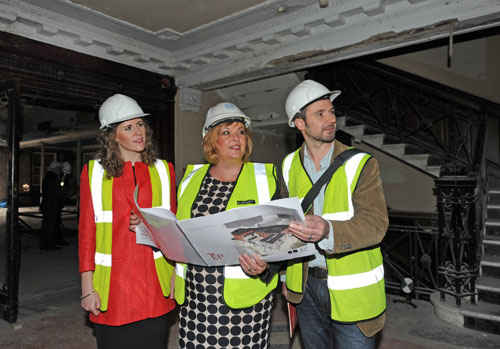THE FIRST women-only engineering class is being offered in Scotland.
The City of Glasgow College is teaching a no-lads-allowed Higher National Certificate (HNC) in engineering after female students said they would lack confidence in a mixed class.
The first 12-strong class will begin this September – with college bosses also claiming it will begin to close the gender gap in the field – where only 6% of students are female.
Scotland has produced a number of world-renowned engineers, including shipbuilder Robert Napier, bridge designer Thomas Telford and steam engine pioneer Thomas Watt.
But despite a rich history of engineering there is only one woman in the Scottish Engineering Hall of Fame – Dorothée [CORR] Pullinger – a Paisley car designer and businesswoman.
Teachers say the idea emerged after a three-day taster course in engineering attracted 70 girls.
Carol Murray, head of construction, engineering and energy at the college, said that in spite of this high level of interest, an enrolled class of 25 students would usually contain just one or two girls.
But after the girls said they would feel more confident in a single-gender class for the first year of their studies – a new female-only class was founded.

The course is now being tested as a year-long pilot scheme – due to start on September 8 – after which the girls will progress into a mixed Higher National Diploma (HND) class.
Murray said: “Girls are interested in engineering – they just don’t want to go to an educational setting where they are the only girl.
“If there are five or six girls, there’s a greater chance that they’ll make friends, enjoy their education and excel academically.
But she stressed that the new course is not intended to discourage male students: “It’s a positive discrimination – we are just doing something to try to open the doors for girls.
“We have an ocean of female talent and, previously, we haven’t been able to tap into it.”
Murray said she is personally aware of the challenge facing women in engineering – after becoming the first female apprentice at Rolls-Royce in 1977.
“I liked maths and was curious about how things work”, she said, “I was the only girl.”
She explained that her big-break in the field came when new equal opportunities laws were coming into effect, adding: “It was a different time then. Attitudes were different.
“We have moved on. It is much more accepted now for girls to go down this route.”
Linda Somerville, project director of Equate Scotland said that the new course would bring much needed female participation to the engineering field.
“We believe that both the industry and the and the women are missing out”, she said.
She also claimed that higher levels of female participation in schools should be matched with efforts from employers: “All too often employers are closing a door to themselves if they don’t look at how or who to recruit.”
Bryan Buchan, CEO of Scottish Engineering, the support group for the engineering industry in Scotland said: “This is certainly an innovative approach to addressing the critical gender gap in the engineering and manufacturing sector.
“It will be very interesting to see how it plays out and if individuals prefer mixed or single-sex classes”.
New Scottish Labour leader Kezia Dugdale has also made calls for increased access for women in engineering.
In a video last week she warned that women were at risk of being “locked out of jobs” because they were less likely to study science, technology, engineering and maths (STEM) subjects.

